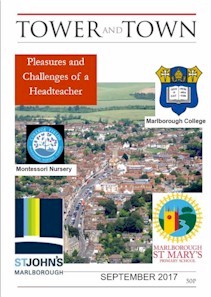

Tower and Town, September 2017 (view the full edition) (view the full edition)College Fields Montessori Nursery SchoolIs Your Child a Little Schema? In Early Years education we use the term Schema to describe the patterns of behaviour of a child who is learning and developing by repeating actions and then adapting them to different environments and situations. The act of repeating a certain action stimulates the child's brain, allowing them to embed their understanding into their long-term memory so identifying schemas in child's play and responding to them with carefully presented activities can really increase their development and understanding. The following groups of physical and mental actions have developed over time as examples of schemas in action. Parents can look out for preferred schema actions at home and provide relevant materials and activities to help their child's development. Trajectory: An interest in movement; vertical and horizontal and forming arcs. The child is learning about the way they move themselves and objects. He may consistently throw or drop objects, reach out for objects, climb up and down, push, pull or swing. Rotation: An interest in turning, rolling, spinning or twisting objects or themselves. She may like to roll toys along the carpet, turn on taps or knobs or consistently like to draw or paint circles or spirals. Enclosing: Creating sides and boundaries, building them around objects or around themselves. He may repeatedly build boundaries for farm animals or hide inside dens or cupboards. Enveloping: Covering, dressing or wrapping up objects or themselves. Repeatedly wrapping or folding objects or pictures, tucking up dollies in to bed putting things into bags or playing dressing up. Transporting: Moving things from one area to another. She may enjoy moving sand or water from one place to another, collecting things in little bags or tins, using wheelbarrows to move objects or diggers in the sandpit. Connecting: Constructing or linking or joining objects or themselves. He consistently chooses to play with building bricks or enjoys tying furniture with string or linking objects together like trains and tracks or using ties, laces and Sellotape to create new things - and often taking them apart is just as important. Positioning: Carefully placing objects or themselves in certain orders and shapes. She may line up cars in rows, stack books or put similar objects in order of sequence - colour or size. Balance objects along the edges of tables or fit things under or inside compartments or boxes. Orientation: Seeing things from a different angle or point of view. Children who repeatedly like to lie down when they play or turn their toys or furniture up-side down, hang from climbing frames or climb high for a new view. If you would like more information, do contact us on 01672 515486 Sophie Shepard |